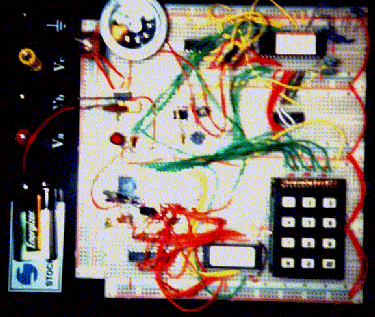
L0pht Heavy Industries Jolly Box Project
A multi-frequency, programmable telephone signalling device
10/26/96 UPDATE!

Since people have shown interest in this project, we will provide the
original Jolly Box design by Jolly Roger and some of the modifications we
have done. At least this way, those with the knowledge will be able to
take advantage of this tool. It is suggested that you examine the circuit
layout carefully for design errors.
9/96 UPDATEClick here for a list of the old Jolly Box functions, which will be included in the new version. If you have any comments about things you would like to see in the new box, or have specific questions, feel free to mail kingpin@l0pht.com. The following describes my experiences with the old design of the Jolly Box. 6/96 UPDATEWe will be releasing a Jolly Box project kit, which will include everything you need (except a project enclosure) to construct the unit. Electronics knowledge/assembly and soldering skills are required, and lack thereof will result in a non-functional heap of electronic components. The project is an excellent and educational way to learn about basic microprocessor theory and and assembly language programming (if you wish to modify the software to suit your personal needs). The first stage of the project was to put the original circuit onto a breadboard for troubleshooting purposes. The breadboard also made it easy to tweak/replace components and EPROM firmware:  Once we got the basic functions of the circuit to work, we created circuit schematics in OrCAD EDA Tools and created a double-sided PC board design with Protel Easytrax, an excellent freeware PC Board layout program. After routing was complete, we etched a prototype PC board by hand. The result looked like this:  The final step in the hardware portion of the project was to double check our netlists and PC Board design and prepare the board for professional out-sourced manufacturing. The software side of the project included general bug-fixing, optimization, and adding new features/functions. Click here for a partial list of Jolly Box functions, listed in order of menu. More functions are going to be added before the final release. If you have any suggestions or ideas, send mail to kingpin@l0pht.com. Please return to this page for more information in the near future, as the Jolly Box project is rapidly nearing its end, and any news will be posted here. |
Return to Kingpin's Home Page
Go back to the L0pht Home Page